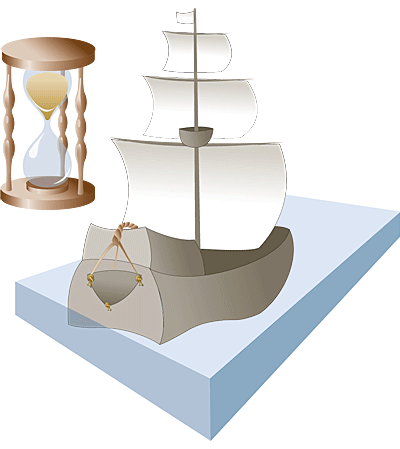Have you ever wondered why ships measure their speed in knots instead of miles per hour or kilometers per hour?
The term “knots” in the context of speed measurement on ships has a fascinating historical background.
The Origin of Knots
Ships measure their speed in knots because of its traditional nautical origins.
A knot represents the speed of one nautical mile per hour, which is equivalent to approximately 1.15078 miles per hour.
How Knots are Calculated
Back in the days before modern technology, sailors used a device called a “common log” to measure the speed of their ships.
They would tie knots at regular intervals along a rope and throw it overboard.
By counting the number of knots that passed overboard in a specific amount of time, sailors could calculate the ship’s speed in knots.
Credit: www.quora.com
Advantages of Using Knots
Using knots for speed measurement offers several advantages over using miles per hour or kilometers per hour.
- Knots provide a more consistent method of navigation on the open seas.
- One knot corresponds to one nautical mile traveled per hour.
- A nautical mile is equivalent to one minute of latitude, enhancing navigational accuracy.

Credit: oceanservice.noaa.gov
Historical Significance
The term “knot” has stood the test of time and continues to be used in maritime and aviation contexts.
Even in today’s modern pilothouses and cockpits, the speed of one nautical mile per hour is still referred to as a knot.
Frequently Asked Questions
Why Do Boats Use Knots Instead Of Mph?
Boats use knots instead of mph because a knot represents one nautical mile per hour, offering consistency for navigation. This relates to the global coordinate system and provides better navigational accuracy for pilots and sailors. The term “knot” originated from the traditional practice of measuring boat speed using knots on a rope.
Why Is Airspeed Measured In Knots?
The term “knot” comes from the traditional method of measuring the speed of a boat or a ship by tying knots in a rope at regular intervals and throwing it overboard. The number of knots that pass through a sailor’s hand in a certain amount of time is the ship’s speed.
One knot represents one nautical mile per hour, which is why airspeed is measured in knots.
How Fast Is 25 Knots On A Boat?
25 knots on a boat is approximately 29 miles per hour, providing a fast and efficient mode of transportation.
How Fast Is 20 Knots On A Boat?
20 knots on a boat is equivalent to approximately 23 miles per hour.
Conclusion
Ships measure their speed in knots as a nod to maritime history and tradition.
By using this unique unit of measurement, sailors and pilots can navigate the vast oceans and skies with precision and accuracy.
